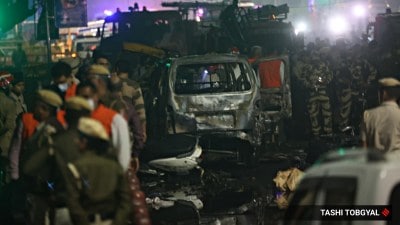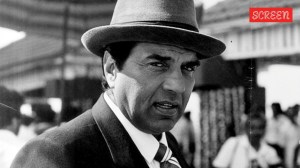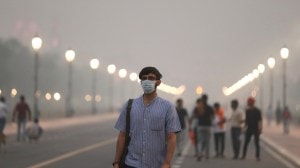China’s spectator Muslims
...

A case in point is the outrage and violence over the Danish cartoons of the Prophet Muhammad. Here in Linxia, which has more than 80 mosques, news of the cartoons spread quickly. The local religious affairs bureau also moved quickly. Local Muslims say officials visited imams and cautioned them against inciting followers. The same happened in 2003, when a few protests broke out over the American invasion of Iraq. The China Islamic Association, the quasi-governmental agency that regulates Islam, quickly intervened and shut down the protest.
Not that most Chinese Muslims need any warning. With 1.3 billion people, China is so huge and Muslims constitute such a tiny minority that most Muslims intuitively learn to keep quiet. ‘‘We can talk about these things among ourselves,’’ said a shopper at a Muslim bookstore. ‘‘But China has a law. We are not allowed to speak out about these things that are upsetting the Muslim world.’’
Dru C Gladney, a leading Western scholar on Chinese Muslims, said the country’s 10 Muslim nationalities usually find common cause only when they feel an issue denigrates Islam, as was the case with the cartoons. Sometimes, disputes between different factions can end in violence. Gladney said the largest group, the Hui, regard some Uighurs as unpatriotic separatists who give other Chinese Muslims a bad name.
The Hui, he said, have blended fairly well into society by placing pragmatism over religious zeal and adopting the low profile of an immigrant group living in a foreign land—despite their presence in China for more than 1,300 years. ‘‘They don’t tend to get too involved in international Islamic conflict,’’ said Gladney, a professor of Asian studies at the University of Hawaii. ‘‘They don’t want to be branded as radical Muslims.’’
Yet Chinese Muslims should not be considered completely housebroken by authoritarian rule. Since the 7th century, when Islam began arriving in China along trading routes, there have been periodic Muslim revolts. Under the Communist Party, Muslim rage, if mostly contained on international issues, has erupted over localised affronts. In 1989, Muslims took to the streets to denounce a book that described minarets as phallic symbols and compared pilgrimages to Mecca with orgies. Government officials, who allowed the protests, quickly banned the book and even held a book burning.
A few years ago, thousands of Muslims protested in various cities after a pig’s head was nailed to the door of a mosque in Henan Province. And last year, riots erupted after Hui from all over central China rushed to the aid of a Muslim involved in a traffic disute.
At the Mayanzhuang Islamic school in Linxia, Ma Huiyun, 40, the director of studies, said Chinese Muslims want closer ties to the Islamic heartland in the Middle East. His school now has two computers to obtain news from the Middle East or about the Iraq war. This year, Ma made his first pilgrimage to Mecca, one of roughly 10,000 Chinese Muslims estimated to have taken part in the hajj. The government has begun hiring Chinese Muslims to work in Middle Eastern embassies and state-owned companies that do business in the region.
Linxia, once known as Hezhou, has been a center of Islam for centuries and now has a climate of religious tolerance. But Muslims elsewhere in China face more restrictions. In Xinjiang, for example, Muslim schools are tightly monitored and are allowed only limited numbers of students. Many of the same societal problems that fueled protests by Islamic immigrants in Europe— discrimination, lower education levels, higher unemployment, a sense of cultural separation from the dominant majority—can be found in China, too.
China’s Muslim population is stable, but among upwardly mobile Chinese, Islam is not as popular as Buddhism or Christianity. The pressure to assimilate, too, has watered down Islam in many places; in cities, some people who call themselves Muslims abstain from eating pork but rarely attend mosque. (New York Times)





- 01
- 02
- 03
- 04
- 05


























